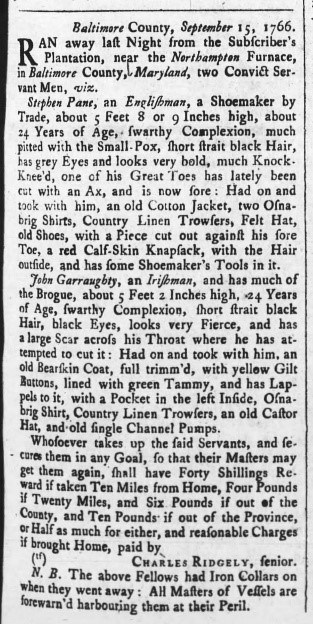
NPS The “Description of White Workers” at Northampton begun in 1772 (and now in special collections at the Maryland Historical Society, MS. 691) had a single purpose, identification of indentured servants who escaped. Advertisements for escaped indentured workers provided detailed physical descriptions. They also provided insight about how people escaped and punishments inflicted on runaways. Payments are recorded amongst the Northampton accounts of the Ridgely papers for broadside announcements, newspaper notices, expenses for employees and horses to pursue and bring back escapees, and for sheriffs’ and jail fees and rewards. Unlike later enslaved freedom seekers who were able to escape to Baltimore City and assimilate there among a large free black population, Baltimore Town of the late eighteenth century was still a small town with a population suspicious of convict laborers. Indentured servants more often struck out for Annapolis, Philadelphia, and southern Pennsylvania, sometimes with the goal of returning to England. |
Last updated: March 18, 2024
